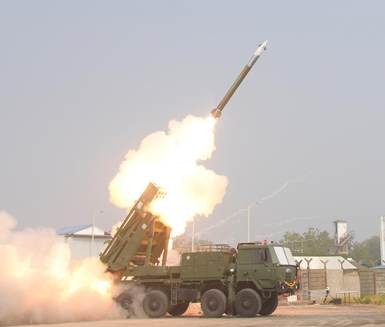



Amending India’s nuclear liability laws, like the CLNDA and AEA, to allow private companies could boost nuclear capacity from 8 GW to 100 GW by 2047. However, concerns persist about foreign investment, technology transfer, and high capital costs, particularly for Small Modular Reactors, despite their safer designs.

Copyright infringement not intended
Picture Courtesy: THE HINDU
India debates amending nuclear laws to attract private and foreign investment in atomic energy.
Indian policymakers are planning to amend foundational nuclear energy laws: the Atomic Energy Act (AEA) of 1962 and the Civil Liability for Nuclear Damages Act (CLNDA) of 2010.
The central objective is to open the doors for private companies to build and operate nuclear power plants, to support the government's ambitious vision of expanding India's nuclear energy capacity from the current 8 GW to 100 GW by the year 2047, aligning with its clean energy and net-zero commitments.
Overcoming Investment Roadblocks => India cannot achieve 100 GW target without huge investment, which the public sector alone cannot provide. Private sector participation, both domestic and foreign, is seen as an essential for infusing capital into this high-cost sector.
Removing Legal Barriers for Foreign Players => The current liability law, particularly the CLNDA, is a major deterrent for foreign nuclear suppliers. Companies hesitant to enter the Indian market. The law holds suppliers liable in case of an accident, as opposed to the international norm where liability is directed exclusively to the operator.
Stimulating Domestic Industry => The liability law also affects the domestic supply chain. After the CLNDA was passed, even Indian private suppliers became reluctant to provide components for nuclear plants, fearing liability. Amending the law would provide legal certainty and encourage deeper participation from the Indian private sector.
Access to Advanced Technology => Opening the sector to private players could facilitate access to newer technologies like Small Modular Reactors (SMRs). Proponents, like policy expert Ashley Tellis, argue that newer companies developing SMRs might be more open to technology transfer as a commercial strategy to gain market access and achieve economies of scale.
Flawed Premise of Investment => Opponents argue that the roadblock to nuclear expansion is not merely investment but also the limited global capacity for rapid expansion. Major nuclear powers like the U.S. and France have not expanded their domestic capacity at the rate India is expanding.
Undermining the 'Polluter Pays' Principle => The CLNDA was enacted with the core principle that suppliers of faulty equipment must also be held accountable. Critics argue that amending this to channel all liability solely to the operator would let foreign and private suppliers free, compromising safety standards and violating the fundamental 'polluter pays' principle.
Hypothetical Gains from Technology Transfer => Critics point to the defence sector, where despite allowing up to 100% FDI, significant technology transfer from foreign firms has not materialized because it is often not in their commercial interest. There is no guarantee that the nuclear sector would be any different.
Risks of Untested Technologies => While SMRs are promoted as safer alternatives, they are still a relatively new and economically unproven technology. Critics question the wisdom of diluting liability laws to attract suppliers of such untested technologies, especially in a developing country like India.
The International Liability Regime => The Convention on Supplementary Compensation (CSC), which India has ratified, is an international treaty that channels liability to the operator. Proponents of amendment argue for aligning Indian law with this convention. However, critics argue the CSC was designed to protect suppliers, not victims.
Any amendment to the existing laws must be carefully drafted to find a middle ground that encourages private participation and access to technology while upholding the principle of accountability. This could involve innovative risk-sharing models, stringent regulatory oversight by an empowered and independent Atomic Energy Regulatory Board (AERB), and ensuring that any liability regime is robust enough to protect Indian citizens first and foremost.
The decision India makes will not only shape its energy future but also set a precedent for how a sovereign nation balances its development aspirations with its responsibility to its people.
Must Read Articles:
Nuclear Sector Opens to Private
India's Nuclear Sector are Dynamic
Source:
|
PRACTICE QUESTION Q. Examine the role of indigenous thorium reserves in shaping India’s long-term nuclear energy strategy. 150 words |









© 2026 iasgyan. All right reserved